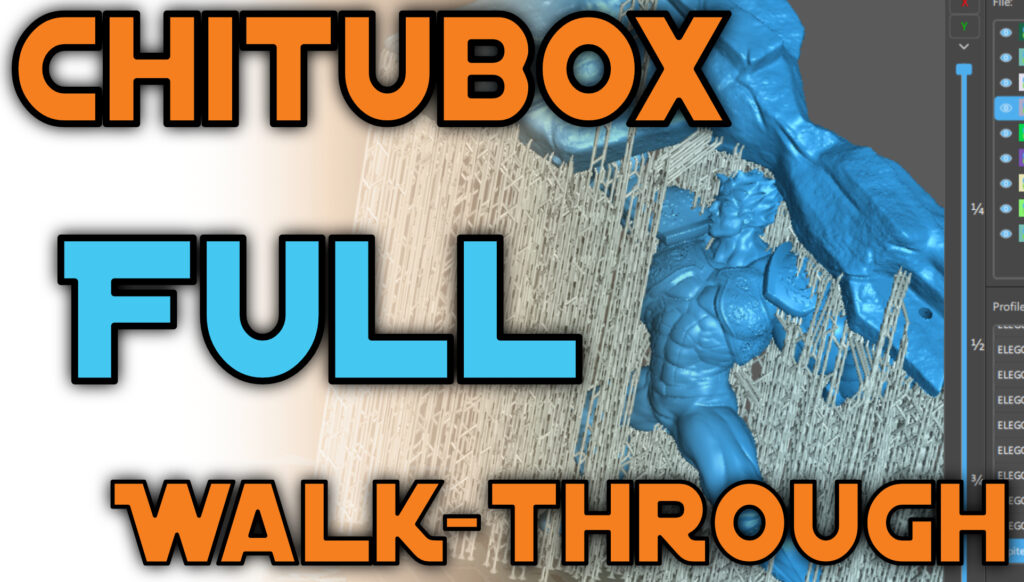Sla Printer – Creating Perfect Resin Supports
Index
- Support Settings Instructions
- Calibration STL Links
- Recommended Resources
- Other PDF guides
Setting Up Support Settings
In today’s article, we will focus on customizing our settings to get the best results from our resin prints.
Orientation, size and surface area all play an important role in a successful print, but each of these often depend on the type of model you have and the resin being used. It’s very important to first establish proper exposure settings for the machine, since this affect the results of the calibration. I personally prefer to use Photonsters Validation Matrix 2 for my preliminary calibration, and I will include a link in the description below. It prints quite quickly and allows me to get results fast. If at all possible, it’s generally recommended to print with a colour that’s easily readable, since this makes it easy to gage the results. I generally always start with the manufacturer’s recommended settings, then incrementally increase these or decrease them until these two points are just barely touching. I will also aim to make sure that as many of these lines are printed as possible.
Some slicer’s offer a variety of saved settings for different use cases, and these will be important to set up properly before even adding them to your model. In Chitubox for instance, you can choose between your light, medium and heavy supports and these can vary quite a bit depending on the use case. In order to determine what settings to actually use, especially for the model contact points, you could do it the long way or use a model that’s similar to Amerlabs. This model is great for figuring out the support thickness for the smallest of supports, as well as their connection lengths. Amerlabs has included a great guide on how to use their calibration test, so I’ll include this link as well. Once you’ve figured out which dimensions worked best for your specific resin. You can then begin creating your custom support settings. Seeing as the most difficult settings tend to be for small miniatures, we’re going to focus on these for now.
To start things off, we’ll adjust the bottom exposure number, since this is quite often is too high. I’ve found that in most cases I only need to have one to two bottom layers, so long as I increase the bottom layer exposure time. To find out what this should be set to, you’re going to refer to that initial test where you printed the validation matrix. I normally add between 5 and 10 seconds to this initial bottom exposure time to help ensure proper adhesion. For the medium and heavy support settings, I’ll normally go with the standard recommendations since they require more rigidity.
We’re then going to take the number for the layer height and use this to calculate the platform touch shape thickness. For small prints this normally only needs to be a 1 layer, but for larger one’s I’ll use 2 to 3 times that initial thickness (layer height x bottom layer count). Generally, the heavier the support that I need, the thicker I’ll make this, so it remains rigid enough not to bend or break. You can see in this example the differences between my different types of support.
The connection point’s Upper diameter will depend on the results of the Amerlab’s test. I normally go slightly higher than the first successful pillar dimension, which is between 0.1 to 0.5 mm. The lower diameter for the connection point will be the same as the thickness of the pillar, however some users choose to reduce this number. I normally set the connection length just under the first successful test, just to be safe.
The pillar shapes have to support the model and remain rigid enough not to flex while printing, so in this case I normally air on the side of caution. I normally go slightly above double the thickness when compared to the “Upper diameter”. This helps ensure that the pillar will have a lower likelihood of flexing during the raising and lowering of the build plate. When setting up my heavy supports, I’ll set these fairly large, since I normally use those when I’m printing props. Models such as those tend to be quite heavy, and the last thing I want is for a print to fail or fall off.
When using automated supports, I’ll normally have these set to above 90% with an angle percentage of 35%. With the basic settings for your supports, it’s now time to implement these with your first prints, and you can see that process here.
Links to Calibration Files
Resources
Yasmeen completed both the 2D and 3D animation course at Algonquin College and worked in the animation industry as a freelancer for a number of years before being hired to manage the 3D printing services at ItsYeBoi. While using the Alias of "Jenny" during her services, she was responsible for the testing, maintenance and upgrading of the machine while also filming and developing 3D printable assets for various projects.

